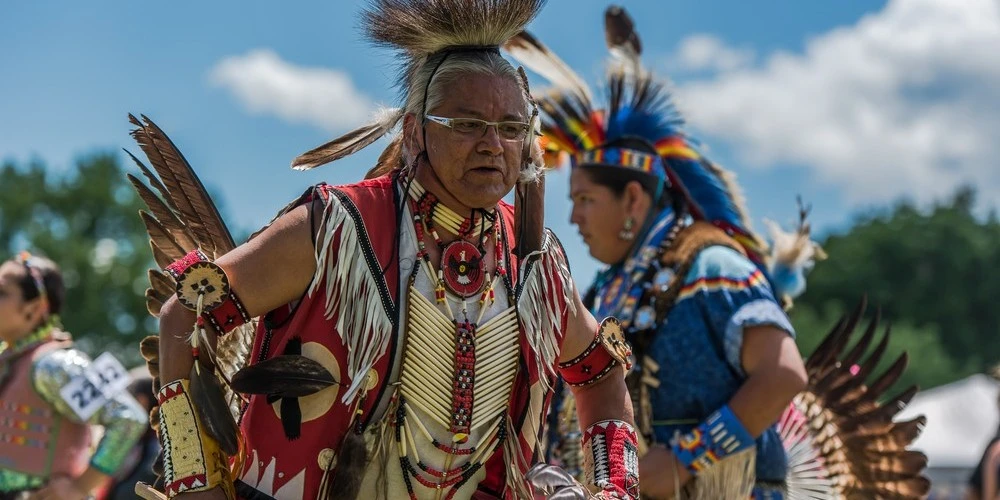What is Reconciliation in Canada?


“Reconciliation” has become a Canadian buzzword, developing a contentious and controversial nature over time.
As defined by the Canadian government, reconciliation seeks to develop the understanding of how colonialism in Canada continues to shape our society and affect Indigenous Canadians, ensuring that Indigenous communities and cultures are treated with dignity and respect at all times.
There are differing views on what reconciliation should actually mean. Some people think it’s about decolonizing Canada, suggesting that land is to be given back to Indigenous people and that current acts of colonisation such as systemic racism and resource exploitation be addressed.
Others believe we can achieve reconciliation by sticking to Canada’s constitutional laws, which were put in place to protect Indigenous rights since 1982. This legal approach views Canada as a legitimate state working to balance Indigenous rights with the Crown’s sovereignty.
Knowledge Is the first step in enacting real change. Regardless of opposing views, it's the responsibility of all Canadians to educate themselves on Indigenous issues.
Canada’s Dark History and its Impact on Indigenous Peoples
Colonialism in Canada
In the late 15th century, English and French explorers came to Canada to forcibly (and violently) claim land from Indigenous peoples, for their home countries. Settlements and fur trading networks were established, leading to conflicts both with Indigenous peoples and between colonisers. By 1763, Britain ended up with most of the colonised territory in North America.
The work of widespread colonialism began. The British implemented policies to assimilate Indigenous peoples, including treaties that led to the displacement and marginalisation of Indigenous communities. Throughout the 19th and 20th centuries, Canada expanded westward, at the expense of Indigenous lives, land and cultures.
Residential Schools
Residential schools were funded by the government and run by the church. They were started in the late 19th century to assimilate Indigenous children into Euro-Canadian culture. Children were stolen from their families and communities and endured dehumanisation in the form of violent discipline, erasure of their culture, and severe humiliation and abuse, often ending in death. The children were forbidden to speak their languages and practise their traditions.
The legacy of these schools includes deep-rooted trauma, mass graves of indigenous children being discovered across Canada, and disruption of Indigenous cultural continuity.
Government Policies Impacting Indigenous Communities
Beyond the residential school system policies, other harmful policies were put into place as the British, the French and the church continued their genocidal tactics:
-
The Indian Act of 1876 - This federal law governs all matters related to First Nations status, bands and reserves. It has been rightfully criticised for oppressive and discriminatory policies, such as the ban on traditional practices, policies restricting First Nations governance, and the overall control of Indigenous life.
-
Enfranchisement Policies (The Gradual Civilisation Act of 1857) - These policies were created to assimilate Indigenous peoples by encouraging them to give up their First Nations status and become citizens of Canada. This led to Indigenous identity loss and loss of rights for those who were enfranchised.
-
The Sixties Scoop (1960s - 1980s) - Continuing similarly harrowing actions of the residential school system, the Sixties Scoop was a large-scale removal of Indigenous children from their families and communities, to be placed in foster care or adoption. This caused massive disruption to families and communities and led to both loss of cultural identity and long-term psychological effects.
Canada’s Truth and Reconciliation Commission (TRC)
 Is it possible to heal a nation with a history of decades of systemic abuse and cultural genocide? While certain atrocious acts can never be rectified, Canada began its attempt in 2007 to address the immense damage done to Indigenous cultures and communities.
Is it possible to heal a nation with a history of decades of systemic abuse and cultural genocide? While certain atrocious acts can never be rectified, Canada began its attempt in 2007 to address the immense damage done to Indigenous cultures and communities.
The Indian Residential Schools Settlement Agreement is the largest class-action settlement in Canadian history. Within the agreement, the Truth and Reconciliation Commission of Canada was created to facilitate reconciliation between former residential school survivors, their families, communities, and all Canadians.
Funded by the Canadian Government, the TRC operated for 8 years, travelling across Canada to hear stories and accounts from over 6,500 witnesses. The Commission also hosted seven national events to educate the public and honour the experiences of survivors. A historical record of the residential schools system was compiled, with over 5 million records provided by the government themselves, and is now housed in Manitoba’s National Centre for Truth and Reconciliation.
In 2015, the TRC presented a summary of its findings and 94 Calls to Action in an effort towards further reconciliation. The full six-volume final report was released later that year.
While it's a significant step in the right direction, there is still a long way to go to “make things right” (a common Indigenous expression) between First Nations, the Government and settler Canadians. Many question if such a task is even in the realm of possibility.
Ongoing Reconciliation Efforts and Initiatives
 The Canadian government, local communities, the education system and Canadian corporations have various initiatives, projects, reforms and guidelines geared towards the concept of reconciliation.
The Canadian government, local communities, the education system and Canadian corporations have various initiatives, projects, reforms and guidelines geared towards the concept of reconciliation.
Federal Government Actions
-
National Inquiry into Missing and Murdered Indigenous Women and Girls (MMIWG) was established in 2016 to investigate and report on the systemic causes of violence against Indigenous women and girls. The final report was released in 2019 and includes 231 Calls for Justice.
READ: Red Dress Day: Everything You Need to Know
-
United Nations Declaration on the Rights of Indigenous Peoples (UNDRIP): The federal government passed Bill C-15 in June 2021, committing to aligning Canadian laws with UNDRIP, which outlines the rights of Indigenous peoples on a global level.
-
Indigenous Languages Act was enacted in 2019 to support the revitalization, maintenance, and promotion of Indigenous languages in Canada.
-
Jordan’s Principle is a child-first initiative ensuring First Nations children receive the public services they need when they need them. Funding and services have been expanded since 2016.
-
Indigenous Housing Initiatives are actively Investing in housing for Indigenous communities, including urban, rural, and northern housing strategies, to address critical housing needs.
Provincial Government Actions
British Columbia:
-
The Declaration on the Rights of Indigenous Peoples Act (DRIPA) was passed in 2019, making BC the first province to adopt UNDRIP into law.
-
First Nations Health Authority (FNHA) was established to oversee the delivery of health services to First Nations in BC.
Ontario:
-
Indigenous Education Strategy aims at improving Indigenous student achievement and closing the education gap.
-
Walking Together: Ontario's Long-Term Strategy to End Violence Against Indigenous Women is a comprehensive plan to address and prevent violence against Indigenous women.
Alberta:
-
Indigenous Climate Leadership Initiative focuses on supporting Indigenous-led climate projects.
-
A new K-12 Curriculum includes mandatory Indigenous history and culture education for all students.
Manitoba:
-
Path to Reconciliation Act was passed in 2016 to guide the province's reconciliation efforts, including annual reporting on progress.
-
Manitoba’s Indigenous and Northern Relations works to uphold good relations and partnerships with Indigenous communities.
Quebec:
-
The Viens Commission was established to investigate the relationship between Indigenous peoples and public services, with a final report released in 2019 recommending various reforms.
-
Plan Nord includes specific measures to ensure Indigenous participation in northern development projects.
Community Projects Working Towards Reconciliation
Community-led projects and initiatives are just as impactful as government actions, and help to strengthen community networks, thereby increasing resilience and connection for Indigenous communities.
National programs like Reconciliation Thunder and the Gord Downie & Chanie Wenjack Fund promote cultural understanding and awareness.
Indigenous community gardens in urban communities, and Indigenous youth leadership programs empower communities and encourage cultural practices.
Arts-based projects such as the KAIROS Blanket Exercise and the National Arts Centre’s Indigenous Theatre, utilise the therapeutic benefits of art to engage communities in expressing creatively what reconciliation means to them.
Friendship Centres in both cities and small towns, and community reconciliation committees provide culturally relevant services and organise local events to build valuable relationships between Indigenous and non-Indigenous residents.
Indigenous knowledge and land-based learning programs, along with healing and wellness initiatives like the Indian Residential School Survivors Society, offer educational and mental health resources for communities.
Corporations Have a Responsibility Towards Reconciliation Efforts
Nowadays corporations have just as much (if not more) power than governments.
Corporations have a responsibility to foster economic inclusion, cultural respect, and sustainable partnerships with Indigenous peoples. Responsibilities include implementing cultural competency training, promoting awareness of Indigenous issues, and actively recruiting and supporting Indigenous employees.
Businesses can support Indigenous enterprises through inclusive procurement, by forming joint ventures with Indigenous communities, and by investing in community projects.
Sustainable land use practices and mitigation of environmental impacts, along with regular reporting and continuous improvement of reconciliation strategies, contribute to corporate accountability and transparency.
Respectful consultation with Indigenous peoples on projects affecting their lands, advocating for Indigenous rights, and ensuring Indigenous representation in decision-making processes are all essential actions for corporations.
READ: Navigating Public and Multicultural Holidays in Canada
Ongoing Challenges to Reconciliation
 Unfortunately, things are slow going in regards to implementing the TRC recommendations. Ongoing systemic issues hinder reconciliation in Canada:
Unfortunately, things are slow going in regards to implementing the TRC recommendations. Ongoing systemic issues hinder reconciliation in Canada:
-
Institutional racism, discrimination, bias, stereotypes and prejudices against Indigenous peoples.
-
Extreme poverty and high unemployment level in Indigenous communities.
-
Conflicts between federal, provincial, and Indigenous governments over jurisdiction and authority.
-
Inadequate implementation of Indigenous rights.
-
Lack of Indigenous curriculum and limited access to education for Indigenous peoples.
-
Limited access to healthcare and continued mistreatment within healthcare institutions.
-
Inadequate housing in the form of overcrowding and substandard conditions, often resulting in long-lasting health complications.
-
Insufficient infrastructure including clean water, sanitation and public transportation in Indigenous communities.
-
Erosion of Indigenous languages due to historical policies and lack of support for language revitalization efforts.
-
Disconnection from traditional lands and cultural practices due to historical displacement and current policies.
-
Misappropriation of cultural elements such as symbols, practices, and ceremonies
-
Genuine respect is undermined through superficial or tokenistic gestures toward Indigenous culture without meaningful engagement or commitment.
There are several misconceptions about Indigenous peoples that fuel racism, stereotypes, misunderstandings, and seperation:
-
The belief that Indigenous people are culturally homogeneous
-
The belief that their brutal history is now irrelevant
-
The belief that they all receive substantial financial benefits
These and other misconceptions contribute to a lack of genuine understanding and respect for Indigenous peoples.
How to Support Reconciliation as an Individual
 Gestures such as land acknowledgements are useful in that they educate others as to who were the original occupants and stewards of respective areas, sharing names and pronunciations. They show respect to the Indigenous groups whose land we occupy.
Gestures such as land acknowledgements are useful in that they educate others as to who were the original occupants and stewards of respective areas, sharing names and pronunciations. They show respect to the Indigenous groups whose land we occupy.
As the old saying goes, actions speak louder than words. There are ways to actively advocate and show support for Indigenous peoples and their rights. There is a great need for individual efforts as well as collective, sustained action, and these are some ways in which you as an individual can contribute:
-
Education in both the home (as culture starts in the home) and in classrooms is crucial in promoting understanding and empathy for Indigenous peoples. Proactive self-education is the place to start. Workshops and events with a focus on Indigenous issues and perspectives are invaluable.
-
Amplify Indigenous voices by supporting and promoting Indigenous media.
-
Practise active listening when Indigenous stories and experiences are shared.
-
We vote with our dollars. Support Indigenous businesses.
-
Celebrate Indigenous culture by attending events, festivals and ceremonies with respect and a willingness to learn.
-
Advocate for policy reform by writing to government representatives.
-
Join and support Indigenous-lead organisations and initiatives that advocate for change and justice.
-
Study the 94 Calls to Action and advocate for schools, workplaces and community organisations to adopt and implement the actions.
-
Build relationships and stand in solidarity with Indigenous communities at public events and protests.
-
To be anti-racist is to actively combat racism and stereotypes. Expose biases and speak out against harmful words and sentiments directed at Indigenous peoples.
What do our customers say?



























